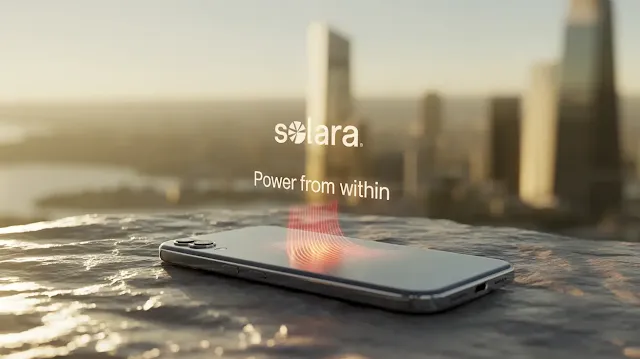Renewable Energy in Smartphones: Is Constant Charging from Body Heat the Future?
Exploring a Revolutionary Concept in Mobile Charging
Can you imagine your smartphone charging just by holding it? As futuristic as it sounds, this concept is rapidly gaining traction through the integration of renewable energy technologies into mobile devices. Scientists and engineers are exploring self-charging systems that convert body heat or solar radiation into usable energy, potentially eliminating the need for conventional chargers altogether.
The Rise of Self-Charging Smartphones
Turning Body Heat into Power
New thermoelectric materials are making it possible to generate electricity from body heat. These materials operate by converting the natural temperature difference between your skin and the device into electric current. The result? A steady trickle of energy that could help power your phone during regular use.
Harnessing Thermal Energy in Everyday Scenarios
Energy from Your Palm
Each time you hold your smartphone, it absorbs heat from your hand. With thermoelectric sensors embedded inside the device, that heat can be transformed into small but valuable amounts of electricity. While the power output isn’t enough for a full charge yet, it’s a promising step toward sustainable mobile energy.
Solar Power Integration in Mobile Devices
Sunlight as a Second Power Source
In parallel with thermal charging, manufacturers are also exploring transparent solar panels integrated into phone screens and backs. These panels can absorb sunlight and ambient light without compromising the phone’s design. Even indoor lighting can contribute to a low, continuous energy supply.
Battery Technologies Supporting Renewable Charging
Smart Batteries for Smart Phones
Traditional batteries aren't built for constant trickle charging. But next-generation batteries are designed to handle slow and steady charging from renewable sources, improving lifespan and reducing energy waste. These innovations work hand-in-hand with energy-harvesting systems to make sustainable charging practical.
Environmental and Consumer Benefits
A Greener Way to Power Devices
Imagine reducing your phone’s dependence on the grid. By switching to renewable sources like heat and solar energy, self-charging smartphones could help cut down on electricity use, lower carbon emissions, and reduce electronic waste from outdated chargers and cables.
Challenges to Overcome
Efficiency and Production Costs
Despite the exciting potential, the technology is still in its early stages. Challenges include:
Low energy conversion efficiencyHigh manufacturing costs
Integration complexity within compact devices
However, ongoing research aims to improve performance and affordability over the next few years.
Market Trends and Innovation Leaders
Who’s Leading the Charge?
Several tech companies and startups are racing to bring these innovations to the market. Their focus: creating devices that offer energy autonomy using sustainable technologies without sacrificing performance or design.
Looking Ahead: Will Charging Cables Become Obsolete?
The integration of renewable energy into smartphones is no longer a distant dream. With advancements in thermoelectric materials, photovoltaic panels, and adaptive battery systems, the future may bring devices that charge themselves as you use them. It's a significant leap toward truly mobile, environmentally responsible technology.




Write a comment, your opinion matters to us